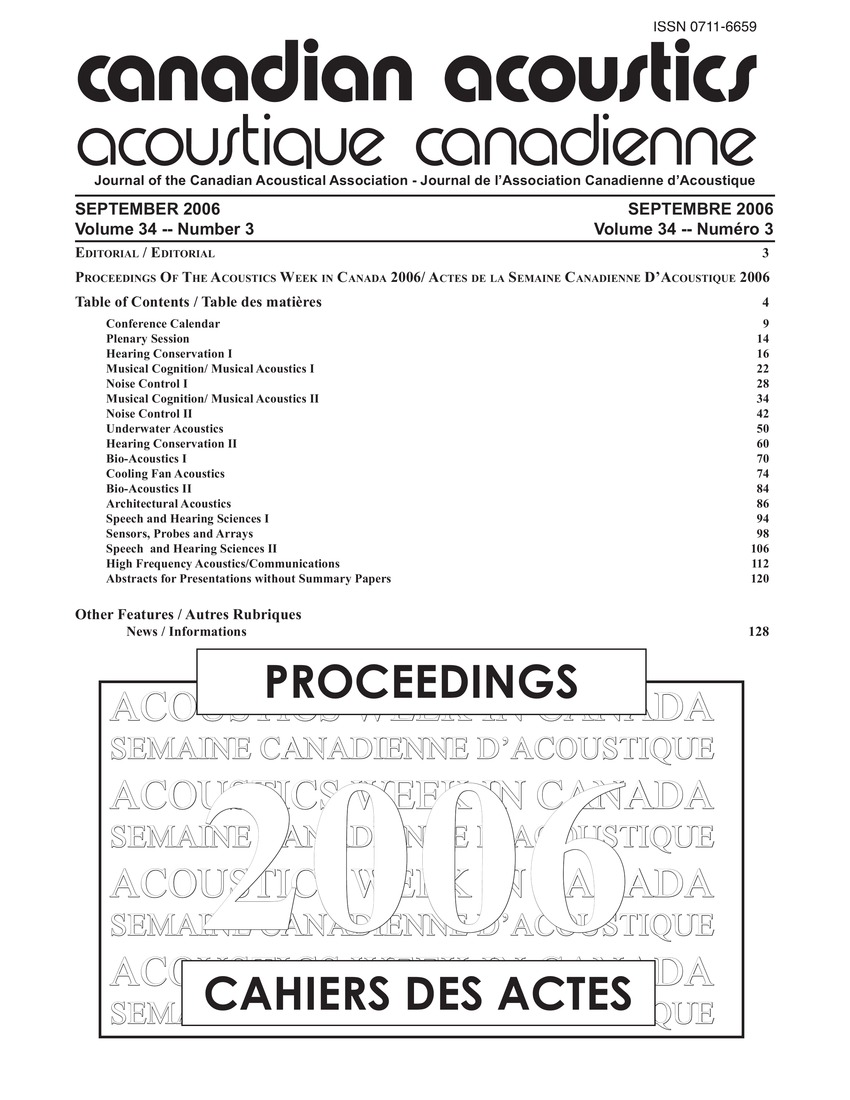Comparittve study of noise and vibration measurements of computer cooling fans
Keywords:
Accelerometers, Acoustic emissions, Data reduction, Fans, Heat sinks, Vibrations (mechanical), Acoustic dipoles, Computer cooling fans, Sound radiationAbstract
The relationship between measured vibration levels of several cooling fan heat sink designs to experimentally determine acoustic emission levels, are presented. The structure of a computer heat sink shroud, which is refereed to as an acoustic dipole, can be modeled to represent a pulsating structure. The sound radiation is representative of the force, which is required to accelerate the added mass of the air. Vibration measurements of four fan sink designs are taken using a very small accelerometer placed at five locations on the heat-sink shroud at various operating speed. All the acoustic measurements are performed in a semi-anechoic room and in accordance to the standards of ECMA-74, ISO 7779 and ISO 3744. The noise measurement data showed that the resulting noise comes from the vibrating source and an aeroacostic generated noise. The aluminum shrouds produce the greatest overall vibration levels compared to the plastic directional shrouds.Additional Files
Published
How to Cite
Issue
Section
License
Author Licensing Addendum
This Licensing Addendum ("Addendum") is entered into between the undersigned Author(s) and Canadian Acoustics journal published by the Canadian Acoustical Association (hereinafter referred to as the "Publisher"). The Author(s) and the Publisher agree as follows:
-
Retained Rights: The Author(s) retain(s) the following rights:
- The right to reproduce, distribute, and publicly display the Work on the Author's personal website or the website of the Author's institution.
- The right to use the Work in the Author's teaching activities and presentations.
- The right to include the Work in a compilation for the Author's personal use, not for sale.
-
Grant of License: The Author(s) grant(s) to the Publisher a worldwide exclusive license to publish, reproduce, distribute, and display the Work in Canadian Acoustics and any other formats and media deemed appropriate by the Publisher.
-
Attribution: The Publisher agrees to include proper attribution to the Author(s) in all publications and reproductions of the Work.
-
No Conflict: This Addendum is intended to be in harmony with, and not in conflict with, the terms and conditions of the original agreement entered into between the Author(s) and the Publisher.
-
Copyright Clause: Copyright on articles is held by the Author(s). The corresponding Author has the right to grant on behalf of all Authors and does grant on behalf of all Authors, a worldwide exclusive license to the Publisher and its licensees in perpetuity, in all forms, formats, and media (whether known now or created in the future), including but not limited to the rights to publish, reproduce, distribute, display, store, translate, create adaptations, reprints, include within collections, and create summaries, extracts, and/or abstracts of the Contribution.


